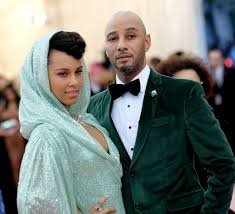Print Media Comments on Personal Relationships

Print media has always held a complex role in shaping how society perceives personal relationships. From the earliest newspapers to glossy lifestyle magazines, the coverage of relationships—whether political marriages, celebrity romances, or societal scandals—has drawn massive readership. The fascination stems from the fact that personal stories humanize public figures, allowing readers to connect emotionally with people they may never meet. Yet, this fascination comes with ethical challenges. How much of a person’s private life should be public knowledge? When does media coverage inform, and when does it intrude? This article explores the ways print media comments on relationships, the ethical boundaries involved, and the broader cultural impact of such reporting.
The History of Print Media and Human Relationships
Long before the rise of digital media, print outlets had already discovered the public’s appetite for relationship stories. In the nineteenth century, newspapers often reported on royal marriages, elite family alliances, and scandals that disrupted social norms. By the twentieth century, magazines like Life and Time covered celebrity marriages and divorces as part of pop culture reporting. Tabloid newspapers took it further, sensationalizing intimate details to boost circulation. This historical trajectory shows that commentary on personal relationships has always been a driving force for media engagement, blending journalism with entertainment.
Ethical Boundaries in Media Coverage
One of the most debated issues in journalism is the ethical line between public interest and private intrusion. Public figures often find their relationships scrutinized, with newspapers justifying coverage by citing the readers’ “right to know.” However, critics argue that such reporting often prioritizes profit over privacy. Ethical guidelines from press councils and journalism associations stress respect for personal dignity, but enforcement varies widely. The ethical dilemma becomes sharper when relationships intersect with politics, governance, or public roles, making it difficult to separate private matters from public accountability.
Print Media as a Shaper of Public Opinion
When print media comments on relationships, it does not simply report—it shapes perception. Readers interpret the tone, language, and emphasis of articles, often drawing judgments about the individuals involved. A sympathetic portrayal may evoke admiration, while sensationalist framing can trigger scandal. For example, stories about politicians’ marriages can influence voter perception, while celebrity romance features can shape fashion, lifestyle trends, or even social values. This influence underlines the power of print media in constructing narratives that extend beyond individuals to reflect cultural norms.
The Role of Tabloids in Relationship Coverage
Tabloid journalism deserves special mention because it thrives on sensationalism. From bold headlines to paparazzi photographs, tabloids often push ethical limits to attract readers. While broadsheets may cautiously report on a divorce or marriage, tabloids exploit every rumor, turning private lives into public soap operas. Critics argue this reduces journalism to gossip, while supporters claim it reflects genuine reader interest. The popularity of tabloids underscores the paradox of modern media: audiences demand relationship stories while also criticizing the invasion of privacy.
Celebrity Culture and Print Media Narratives
In the age of celebrity culture, print media coverage of relationships often takes on mythic proportions. Marriages, divorces, and love affairs become symbolic tales of glamour, heartbreak, or resilience. Magazines and newspapers often use relationship stories to sell ideals of romance or cautionary tales about betrayal. This cultural framing reinforces stereotypes but also provides readers with shared cultural touchpoints. Coverage of high-profile couples can even influence how society defines success, happiness, and family values.
Political Leaders and Their Relationships in Print Media
For politicians and leaders, relationships are more than personal—they carry political implications. Marriages are sometimes portrayed as signs of stability, while scandals can end careers. Print media has historically highlighted the family lives of presidents, prime ministers, and monarchs, using them as symbols of moral character or as evidence of hypocrisy. The coverage may be justified as part of public accountability, but it often risks sensationalizing personal struggles that may not affect professional competence. This blurring of private and public creates ongoing tension in political journalism.
The Shift from Print to Digital—But Legacy Remains
While digital platforms dominate modern journalism, print media still influences how relationships are covered. Major newspapers and magazines maintain reputational authority, and their framing often sets the agenda for online discussions. Digital outlets may amplify stories faster, but the legacy of print’s editorial styles—whether broadsheet caution or tabloid sensationalism—continues to shape narratives. Moreover, print remains trusted by certain demographics, ensuring that its commentary on relationships retains cultural weight.
The Future of Relationship Coverage in Print Media
As society grows more sensitive to issues of privacy, consent, and mental health, the way print media comments on relationships is likely to evolve. Future coverage may emphasize responsible storytelling, focusing less on gossip and more on meaningful insights, such as how relationships intersect with social change. At the same time, competition with digital clickbait may tempt print outlets to retain sensational tactics. The balance between ethics and economics will define the trajectory of relationship coverage in years to come.
FAQs
Q1: Why does print media focus so much on relationships?
Because relationships humanize individuals and draw emotional engagement, which attracts readership and boosts sales.
Q2: Are tabloids more unethical than broadsheets when covering relationships?
Generally yes, as tabloids prioritize sensationalism, but broadsheets can also cross ethical lines when chasing attention.
Q3: How does media coverage affect the people involved in relationships?
It can shape reputations, influence careers, and even cause psychological stress, especially when coverage is invasive.
Q4: Should the private lives of politicians be reported?
Opinions differ—some argue it’s part of accountability, others see it as intrusion unless it directly affects public duties.
Q5: What changes are expected in future media coverage of personal relationships?
A shift toward more responsible, ethical coverage is likely, though sensationalism may persist in competitive markets.
Conclusion
The commentary of print media on personal relationships has always walked a fine line between public interest and private intrusion. From royal weddings to celebrity scandals, newspapers and magazines have used relationship stories to captivate audiences and influence cultural narratives. Yet, the ethical questions remain pressing: how much is too much? The future of print media lies in balancing storytelling with respect, ensuring that coverage of relationships informs society without exploiting individuals. Ultimately, the way media handles these stories reflects not just journalistic choices but societal values about dignity, privacy, and the meaning of human connection.




